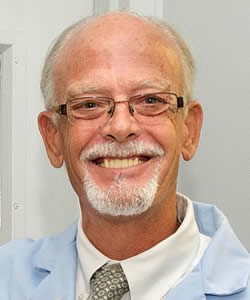
All About CHO – Everything from the basics to troubleshooting
Introduction
In the years since CHO based biopharmaceutical manufacturing began in the 1980’s, the technology has come a long way. Despite continual improvements over the years, including advances in equipment, cell line development practices, and media formulation, gains can still be made in CHO based manufacturing. CHO remains, by far, the most popular cell line for best selling biologics on the market today and as such it is imperative that we continue to find ways to improve on product yield, product quality, cost, and a myriad of other manufacturing challenges. If you are looking for ways to improve your CHO cell line or have a challenge to share, please join us for our Ask the Expert session on everything CHO.
Question 1
What is the difference between all these different types of CHO cells? I read about CHO-K1 and CHO-DG44 all the time.
There are many types of CHO (Chinese Hamster Ovary) cells in use today. It is a bit of a mystery when CHO cells originated but it is thought the line was derived in the 1960's. Dr. Theodore Puck received a female Chinese Hamster from a laboratory at the Boston Cancer Research Foundation and used the animal to derive the original cell lines. One line was known as CHO-K1, was obtained from those first CHO lines. CHO-K1 is an adherent line and was traditionally grown of F12 Medium supplemented with 10% FBS. The CHO lines were thought to be important because they had few chromosomes for a mammalian cell and were used for radiation cytogenetics and they were known for their ease of culturing. CHO-K1 cells also do not express EGFR.
CHO-DG44 cells were derived from the original CHO-K1 cells by several rounds of mutagenesis that deleted both copies of the dhfr genes. Dihydrofolate reductase (dhfr) is required for the de novo synthesis of purines, thymidylic acid, and certain amino acids and is required for growth and proliferation of CHO cells. As a result CHO-DG44 cells require glycine, hypoxanthine and thymidine (GHT) for growth. This requirement allows for selection of recombinant clones by transfection of recombinant DNA plasmids containing a gene of interest and the replacement dhfr gene if cells grow on GHT minus medium then they have taken up the recombinant plasmid DNA and hopefully the gene of interest as well.
Question 2
I would like to know why CHO cells are so special and everyone seems to use them?
Chinese Hamster Ovary cells (CHO) have been around a long time, since the 1960s and as with most of the early-cultured cells they are derived from a rodent. Rodent cells were used to create the first homogeneous cell lines and media formulations. Many events occurred to bring CHO cells to the forefront in biotechnology. CHO cells became popular because they have a low chromosome number and were used to study genetics. As a result CHO cells have been grown for a long time and much is known about their genetics and growth characteristics. Additionally CHO cells so not express the EGR receptor so the cell line was used in reconstitution studies to demonstrate the structure/function of the receptor. As time went on, CHO cells were selected for recombinant protein production because they grew well in culture and some of the CHO lines had selection capabilities for cells containing recombinant DNA plasmids. The next events that catapulted CHO cells into prominence was a combination of FDA approval for bio-therapeutic protein production, the commercial production of animal origin free media developed specifically for a single cell type such as CD-CHO medium and the cells ability to grow in suspension. These characteristics have made CHO cells the most important cell line for the production of therapeutic proteins including humanized antibodies.
Question 3
Hi, I am wondering if the CHO genomic sequence known?
This is a good question and the answer is yes! The paper by Xun Xu et al., Nature Biotechnology, Vol 29, No 8, 201, pg 735. reports that a CHO-K1 ancestral cel line was sequenced. There were 24,383 predicted genes. What is very interesting about the paper is that the authors focused on investigating genes involved in glycosylation. Homologs of most human glycosylation-associated genes are present in the CHO-K1 genome. The authors also point out correctly that this is important since CHO cells are used to make human like therapeutic antibodies and glycosylation patterns are critical to function and turnover rates. Ultimately this research may lead to making CHO cells even better for bio-production than it already is.
Question 4
I was wondering if shipping CHO cells requires any permitting or notification.
This is a interesting question and it took a while to dig up the answer but here it it. According to a U.S. Fish and Wildlife Service (FWS) Notice dated December 21, 2012 hamsters are considered wildlife and are not a domesticated species and therefore import and export are regulated by the FWS. So as a result if the CHO specimens are the actual cells, cell cultures, or cell lines, then a FWS declaration, import/export license, user fees, and clearance are required.
Interestingly, if however, the CHO specimens have been processed to the extent that animal material no longer remains in the specimen, then a FWS declaration and clearance is not required.
In order for a shipment to be exempted from FWS requirements, the trade must submit documents that specifically describe the process that the CHO specimens have gone through. If any statement on the documents indicates that the product such as antibodies or recombinant proteins was extracted from CHO “cells”, “cell cultures”, or “cell lines”, and was purified to remove all cell material, DNA, or animal material, then it is not considered wildlife and FWS clearance is not required.